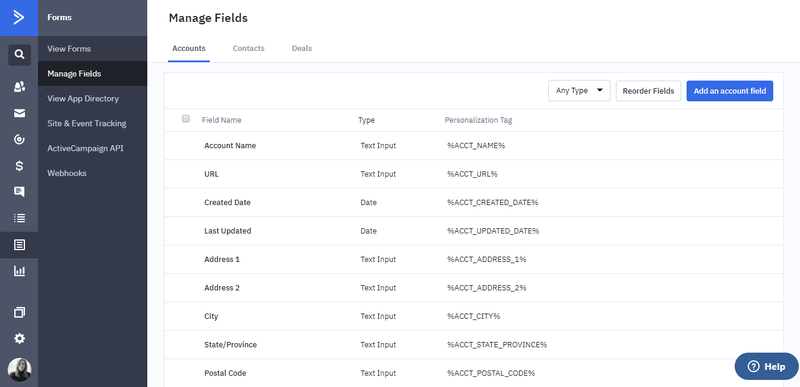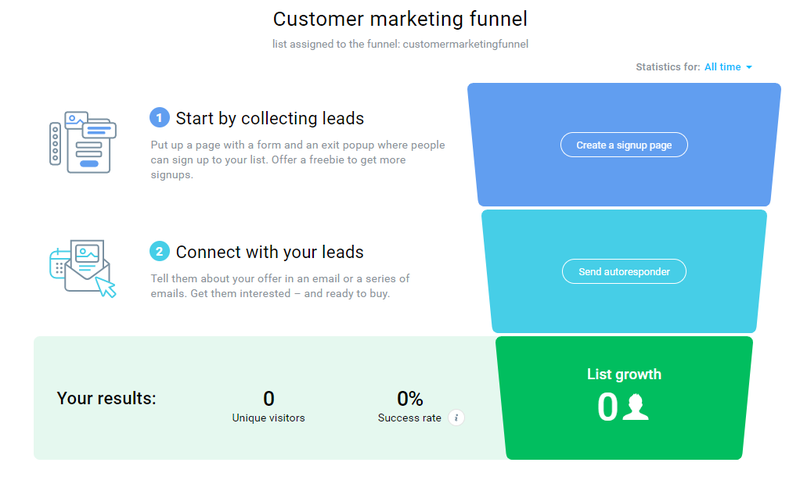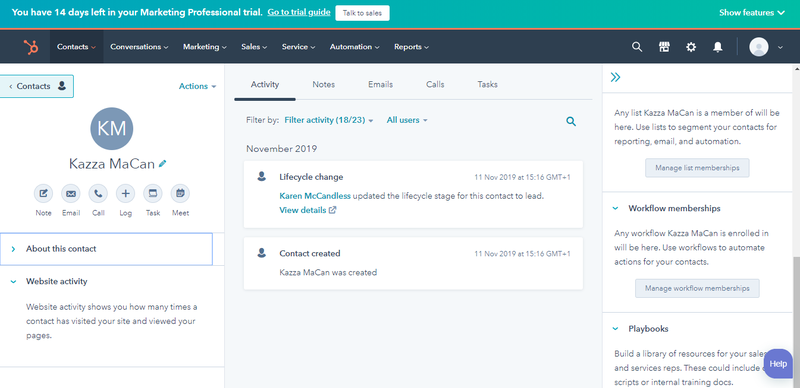
Image source: Getty Images
Traditionally, B2B email marketing campaigns have been more serious, drier, and a lot less interesting than B2C campaigns. Wise old email marketers said B2C purchasing decisions were driven by emotion, while B2B was all about logic and numbers. That’s not necessarily true.
While there are a load of so-called B2B email marketing best practices, there’s is no one-size-fits-all approach that guarantees success.
Smart marketers are realizing they can learn a lot from B2C email marketing campaigns when it comes to engaging customers and creating memorable content.
The most successful B2B marketing campaigns push boundaries and make people think and feel. They win awards and they get industry recognition (for the right reasons).
We’ve put together a list of B2B email marketing strategies to help you build a solid foundation that will let you unleash your creative side and create content that you’re proud of.
What’s the difference between B2B and B2C email marketing?
It’s important to note the differences between B2B and B2C email marketing, so you can better tailor your campaigns to your B2B target market.
Sales cycle
While this isn’t always true, most of the time the B2B marketing sales cycle is significantly longer than its B2C marketing counterpart.
It’s the difference between how long it takes a customer to decide which candy bar or ice cream to buy versus how long it takes a business to decide which software to purchase or which fleet of company cars they want to buy.
This means that you might be creating more emails to nurture the customer down the sales pipeline and encourage them to make a purchase.
There are also more stages in the sales pipeline, and you may go back and forward stages many times throughout the process. This means you have to send the right content for the right stage of the process.
More stakeholders
With B2C marketing, there’s often only one person who is making the decision about which product to buy, but, of course, there may also be friends and family involved depending on the purchase. With B2B marketing, a number of people are often involved in the decision making process.
Take purchasing email marketing software as an example. You might have the head of the marketing department, your most senior email marketers, the head of sales, the head of purchasing, and even the CEO, involved.
This means you have to decide which of these B2B stakeholders you are going to target your marketing material at. You may even decide to create different email campaigns for different stakeholders.
Top 7 B2B email marketing strategies to try
Don’t put the cart before the horse. Make sure you have a plan before you launch into executing a load of email marketing campaigns. Here are seven B2B marketing strategies you need to consider before you launch your campaigns.
1. Create buyer personas
Buyer personas are fictional representations of your ideal customers. B2C buyer personas are made up of characteristics of individuals, such as age, location, job role, income, and preferred social media and marketing channels.
B2B buyer personas contain information that is pertinent to the type of business you are targeting. This includes business size, industry location, job role(s), budget, and pain points that you can solve.
Tips to create buyer personas:
Talking to people and finding out as much about their business as you possibly can is key if you want to create comprehensive buyer personas.
- Talk to people in the industry: Tap into your network of existing contacts and ask them questions about what kind and size of businesses might be interested in your product, who the decision-makers might be, and what issues they face.
- Survey existing customers: Send a survey to existing customers to get as much information as you can on their unique situation and business information. You can get more responses if you incentivize the survey with an Amazon gift card or discount off their bill.
2. Grow your email list organically
It doesn’t matter if you only have 10 people on your email list, as long as they are 10 relevant contacts who are interested in what you are selling.
Don’t be tempted to buy B2B email marketing lists as this may alienate potential customers, since nobody likes receiving emails they didn’t sign up for, unless it’s to say they won $1 million. It could also put you in hot water from a legal perspective.
That’s why you need to put the effort into growing your email list organically. It takes longer than buying a list, but your B2B email campaigns will generate better results. This will also be much easier if you’ve already created buyer personas.
Tips to grow your email list organically:
Focus on quality leads rather than just getting as many people as you can to sign up by following these B2B email marketing tips on how to grow your list organically.
- Reach out to your network: If you look back over your career, you can probably think of a few people who would be interested in your product. Get in touch with them and ask them if they’d like to receive your emails. You can also share information on signing up for your list with your network on LinkedIn, Twitter, Facebook, Snapchat, TikTok, etc.
- Create a sign-up form: Think about the information you need to collect from potential leads, such as business size, industry, and whether they are the decision-maker. And make sure to optimize this form so that it shows up in search engines, as many people start their product search on Google.
3. Focus on B2B email design
Design is completely dependent on the industry. The cosmetics industry will generally require a completely different design from the automotive industry.
But you still need to dial it back a bit in comparison with B2C email design and copywriting, as you are marketing to business professionals.
Tips to focus on B2B email design:
You don’t have to be a graphic design expert to create a professional email campaign. Follow these tips below to supercharge your email design.
- Research your industry: Subscribe to your competitors’ email list and see what kind of campaigns they send, as well as what sort of design and copywriting they use. You can take inspiration from these B2B marketing examples.
- Read industry magazines: Keep an eye on the style and copy used by leading publications in your industry so you know what tone and design to use.
- Use pre-built email templates: Most email marketing services come with built-in templates for a range of purposes and industries. Use templates designed for your industry as a starting point. You can then customize them and adapt them to your brand and style.
4. Send cold emails carefully
This is a controversial B2B email marketing tactic, and one you need to use very carefully, but sending cold emails can pay off if done right.
While we wouldn’t normally advocate sending cold emails if you’re a B2C marketer, do some research to find some email marketing examples of B2B cold emails that work.
Tips to send cold emails carefully:
Less is more. Don’t spam people with generic emails that are of no interest to them. Here’s how to do that.
- Research contacts: Make sure the people you are emailing are in line with your buyer persona. This includes both the business they work for and their job role. Don’t email the HR department if you’re selling email marketing software.
- Personalize content: At the very least, you have to get the first name right. But if you’ve researched your contacts, you should be able to send highly personalized content that references their business, their job role, and any other relevant information you have gathered.
5. Segment your customers
Customer segmentation works in a similar way for both
B2C and B2B email marketers.
You don’t want to send the same content to everyone on your email list, so you segment customers into groups. This allows you to send more relevant, targeted email campaigns.
With B2B email marketing, the type of segments you create might be a bit different. This could include different job roles within the same company (for example accountant versus CFO), business size, industry, and budget.
Tips to segment your customers:
Not all your leads want the same thing. That’s why it’s important to have a strategy for sending to a smaller group, or segment, of prospects and customers to achieve better results.
- Refer to your buyer personas: Think about the attributes that you assigned to your target audience when you created your buyer personas. You could mix and match several of these attributes — such as job title and location — to create more specific segments.
- Use your existing data: This is a great opportunity to gain more insight into both customers and prospects. Look for patterns in your data. Maybe you find that you have a lot of project managers working in businesses with fewer than 10 employees and none of them have made a purchase. Create a segment with these attributes and feed them engaging content to encourage them to make a purchase.
6. Prioritize drip campaigns
Drip campaigns, otherwise known as autoresponders or automations, are a useful tool to help nurture customers down the sales pipeline.
Drip campaigns are automated sequences of emails that are triggered when a customer takes a specific action, such as signing up for an email newsletter.
Instead of manually having to create follow-up emails for each customer for each action, the emails are sent out automatically.
As B2B email marketers normally have to deal with a long sales cycle, drip campaigns are key to keeping customers engaged, no matter their stage in the life cycle.
Tips to prioritize drip campaigns:
Here is how you can create drip campaigns that engage customers and encourage them to make a purchase.
- Identify triggers: You need to think about the actions customers might take that will lead to useful drip campaigns. Signing up to an email list is a good example but try to create drip campaigns that are specific to your business. If you’re a software vendor, this could be a drip campaign triggered by a demo request. If you’re a stationery company, this could be a request for a product catalog.
- Create engaging content: You need to have content ready for each step of the drip campaign, and this needs to be relevant and engaging content. Make sure you invest in high quality content marketing so you can move prospects to the next stage of the sales process.
7. Track results
As a B2B email marketer, your work is never done. You need to track the performance of campaigns, analyzing what factors led to successes and failures, and optimizing campaigns based on this insight.
Remember that what works now might not work in three months’ time, so you need to be tracking results over time.
Tips to track results:
Success will look different for each business, so remember to focus on what you want to achieve, rather than industry standards or what your competitors are doing. Here’s how to do that.
- Set measurable goals: It’s impossible to measure performance if you don’t know what success looks like. Set SMART (specific, measurable, attainable, realistic and timely) goals at the start of each campaign so you know whether it has achieved its objectives.
- Track relevant metrics: if the goal of a campaign is to generate more social media followers then you need to track visitors to your social media profiles. If your goal is to get demos, then you need to measure the number of signups per campaign.
The best email marketing software for B2B companies
It’s important to choose a solution that has the specific functionality that B2B marketers need to best serve their customers.
We’ve put together a list of the best B2B email marketing software to help speed up your decision.
1. ActiveCampaign
ActiveCampaign recognizes that the way B2B companies organize their contacts is different from B2C marketers.
While B2C marketers will associate one person with one prospect, B2B marketers need to manage multiple contacts within the same lead. To do this, it has a menu within its contact management functionality that is called Accounts.

ActiveCampaign includes B2B contact management functionality. Image source: Author
You can add a name to the account (this could be the business name) and add all the relevant details of multiple points of contact, including name, email address, and job role.
2. GetResponse
GetResponse helps B2B marketers who are faced with a long sales cycle, with leads skipping back and forth between stages with ease.

GetResponse’s funnel-based approach helps you nurture customers down the sales pipeline. Image source: Author
To do this, GetResponse organizes its functionality into different marketing funnels that help you understand what actions you need to take to get customers to move along the sales pipeline, as well as how this action will help nurture your leads.
3. HubSpot Marketing Hub
HubSpot Marketing Hub helps join up the B2B sales and marketing teams with its CRM-style contact management.
Both sales and marketers can access account information, such as customer life cycle stage, segments they are in, and drip campaigns they are receiving. You can also see all interactions with a customer, so sales and marketing don’t bombard people with too many emails.

HubSpot Marketing Hub has CRM-style contact management functionality. Image source: Author
Another useful feature, which helps you create better drip campaigns quicker and to personalize and tailor all communications, is the ability to create a playbook of resources that can be quickly sent to customers where relevant.
Laying the foundations
Many email marketers, at least at the beginning of their career, aspire to work with exciting brands and companies in glamorous and exciting industries such as fashion, lifestyle, and travel. The same goes for content marketers and journalists. A lot of my peers slogged away trying to get a foothold in these coveted industries.
But content, including email marketing campaigns, is only as interesting as you make it.
Do your research, put in the effort, get the right tools in place, automate manual processes, and you’ll be able to create the kind of content that makes your B2B contemporaries jealous.


